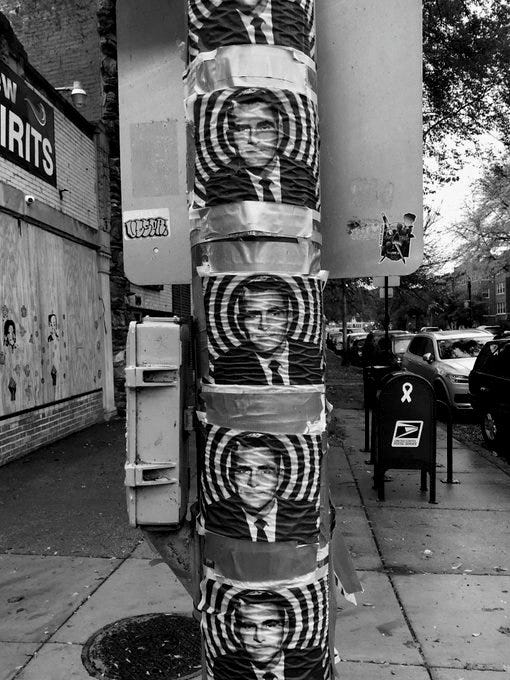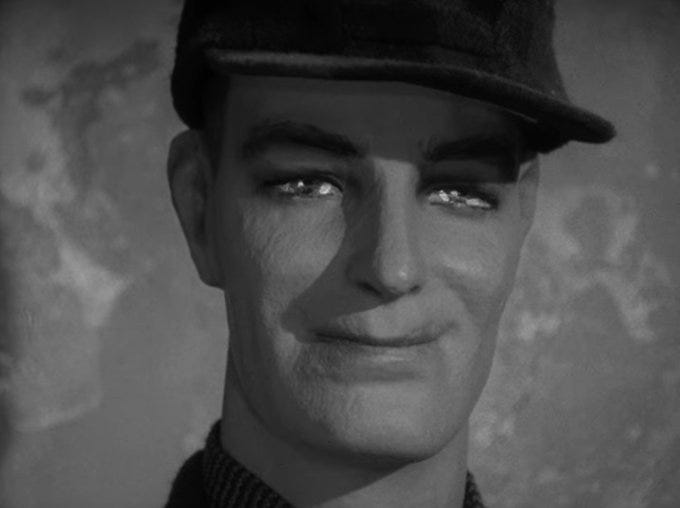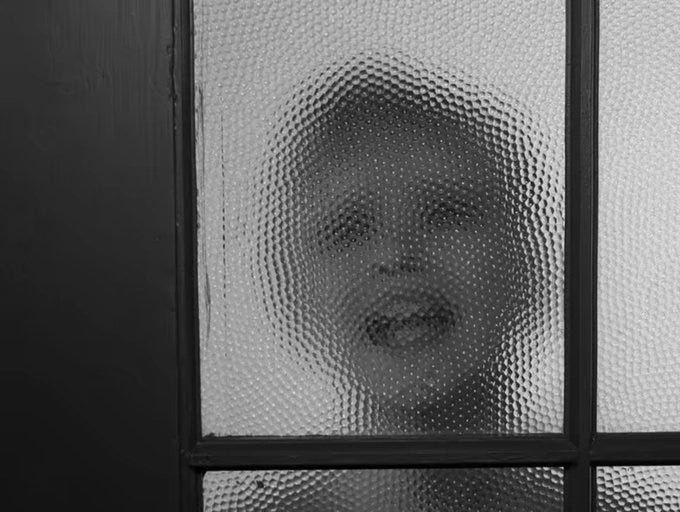SCARY COOL SAD GOODBYE 01
Considering The Twilight Zone, Carnival of Souls, RHOSLC, Obelisks & the Great State of UTAH!
Sup freaks? Welcome to my newsletter. Who knows where this train will take us? Surely not I. For those wondering as to the name: there’s a person in my neighborhood who’s been scrawling demented graffiti on, like, everything. Usually it’s about God or math or something, but one time it was this…
Anyway, I liked it. The next day it was gone. The Dunkin Donuts people erased it. Nobody respects art anymore.
Have you been feeling a little outside of time lately? That feeling, to quote Mark Fisher, as I’m constantly doing these days, “in which life continues, but time has somehow stopped”? (I wrote briefly about this in a recent piece on the phenomenon of The Caretaker Challenge.) You should probably be watching The Twilight Zone, or re-watching. It’s one of the only things that makes sense to me these days, like I’m not nuts for thinking I’m living someone else’s bad dream. Somehow the show’s futurism doesn’t feel dated at all—the contrary, really—which brings me again to Fisher’s ideas on the ghosts of lost futures, the melancholy that follows the realization that “not only has the future not arrived, it no longer seems possible.” And besides that, Rod Serling is hot, and the saturated gray tones are soothing, and the actors pronounce the word “robot” like this:

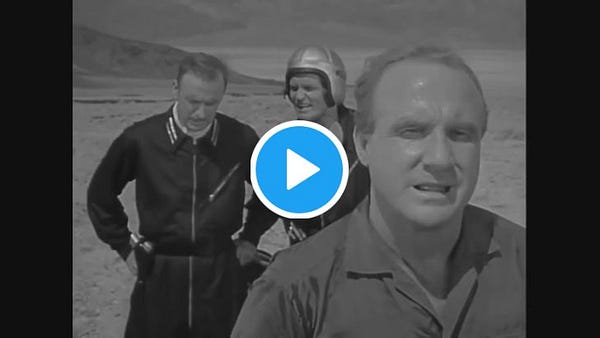
As it happens, there’s another fellow in my neighborhood who tapes up weird shit he prints out. (Different guy. I saw him once, hanging pictures of Governor Pritzker under which he’d Sharpie’d “YAY! PEPTO BISMOL!!”) I was knee-deep in season one last month when I found this en route to the liquor store…
A great Rod Serling quote, from his monologue in the episode titled “Night Call”: “According to the Bible, God created the heavens and the earth. It is man’s prerogative, and woman’s, to create their own particular and private hell.”
Which corresponds nicely with one of my favorite YouTube comments, the video for which I can’t recall…
Now this was no easy task, but I’ve compiled for you a list of my 10 favorite TZ episodes. I haven’t yet watched season four, so that’s not on here. Forgive me.
The After Hours (S1E34)
One More Pallbearer (S3E17)
The Hitch-Hiker (S1E16)
The Passersby (S3E4)
The Masks (S5E25)
I Am the Night — Color Me Black (S5E26)
A Passage for Trumpet (S1E32)
The Shelter (S3E3)
Spur of the Moment (S5E21)
The Lonely (S1E7)
Black Leather Jackets (S5E18)
Cancel me if you must, but I occasionally tire of the sanctity of science in These Uncertain Times. Like how you’ll see those signs in people’s windows: “IN THIS HOUSE WE BELIEVE SCIENCE IS REAL & LOVE IS LOVE” and so forth, you know the ones. Which is nice, and science is real, in a sense, I suppose. But one thing I love about The Twilight Zone is that it deals in what’s outside of science, a world where rationalism is finite and mystery as boundless as the cosmos.
There’s an episode in season one, “The Hitch-Hiker,” which I’m especially fond of. In it, a young woman called Nan Adams, named for one of Serling’s daughters, is on a road trip from NYC to LA which is briefly interrupted by an accident in Pennsylvania. Leaving the mechanic’s, she sees for the first time a hitchhiking man who will haunt her across state lines and time zones. By the time Nan meets a sailor at a gas station in New Mexico, she’s frantic, offering him a ride for the sheer sake of companionship. (The scariest part of the episode is when the guy asks from the passenger seat, “Mind if I take off my shoes?”) A different production might emphasize the stranger danger of a sleazy man in the car of a frightened woman. Instead, it’s the sailor who books it in fear of Nan’s paranoid erratics, though she begs him to stay, telling him without much conviction how she really, really likes him.
It’s in a telephone booth in Arizona, trying in vain to call her mother, where we learn alongside Nan that she never survived the accident, that the hitch-hiker trailing her was, of course, Death himself. But as she walks to her car, where Death waits in the backseat, she isn’t afraid anymore. In fact she’s practically floating as she says aloud, in a dreamy voice: “It’s as if someone had pulled out some kind of a plug in me, and everything—emotion, feeling, fear—has drained out. And now I’m a cold shell! I’m conscious of things around me now—the vast night of Arizona, the stars that look down from the darkness. Ahead of me stretch a thousand miles of empty mesa. Mountains, prairies, desert—somewhere among them, he’s waiting for me. Somewhere I’ll find out who he is. I’ll find out. I’ll find out what he wants. Though just now, for the first time, looking out at the night—I think I know. I think I know.”
Researching the episode, which premiered in 1960, I’d often see mentioned a horror film from 1962 called Carnival of Souls. Shot in three weeks on a shoestring budget by Herk Harvey, who never made another film, Carnival went mostly unnoticed in its day, though it’s now considered a cult classic. I’ve watched the movie three times in the past two weeks. (It’s on Criterion, FYI.) You can see the resemblance to Twilight Zone straightaway, though it feels in no way redundant. It begins, like “The Hitch-Hiker,” with a car accident—a drag race gone wrong sends a car, and three young women, into a river. One emerges: Mary Henry, a blonde with greyhound energy, who is heading to Salt Lake City to work as a church organist, though she herself isn’t religious. A job is a job.
Back on the road, Mary is shaken by the face of a horrifying man leering into the passenger side window. (Allow me one last Mark Fisher reference, though in fact it’s Burial speaking here, from his wonderful 2007 interview with Fisher for The Wire: “There’s nothing worse for a human being than to see a face where it doesn’t belong.”) She is captivated, too, by a strange building in the desert—a real-life abandoned building called the Saltair Pavilion that similarly captured Harvey and inspired the film’s creation. “It was sunset, and I was driving back to Kansas from California when I first saw Saltair,” Harvey said in a behind-the-scenes video. “It’s an amusement park located at the end of a half-mile causeway out into the Great Salt Lake. The lake had receded and the pavilion, with its Moorish towers, stood silhouetted against the red sky. I felt I had been transported into a different time and dimension. I couldn’t believe what I had seen. I stopped the car and walked out to the pavilion. The hair stood up on my neck. The stark white of the salt beach and the strange dark quiet of the deserted buildings made it the spookiest location I had ever seen.”
There’s a man who lives across the hall from Mary in her Salt Lake City boarding house, a skeezy drunk who sucks and who won’t leave her alone. But after an afternoon spent being ignored by everyone in town—during which Mary muses, “It was as though for a time I didn’t exist, as though I had no place in the world”—she is desperate for his terrible company, clinging to him until he’s repulsed by her oddness. Basic, maybe, but what came to mind were the lyrics: “People are strange when you’re a stranger / Faces look ugly when you’re alone.” And Mary is strange, built, by her own admission, for a different world. And though she insists against any sort of spiritualism in her divine organ performances, there is something in the way she plays that suggests otherwise—that as she loses herself in the keys, she is seeking either communion or oblivion. Nothing in between.
Of course, as in “The Hitch-Hiker,” Mary never survived the accident, and the spectres haunting her were her kinfolk. Some people are doomed from the start.
It’s funny, my new favorite flick taking place in Utah, cause when the spectacularly demented Real Housewives of Salt Lake City franchise debuted last month, I said to myself: “Mormonism is going to trend BIG for F/W 2020.” (Listen, I have a high tolerance for trash when it comes to reality television, but if you haven’t yet born witness to varyingly lapsed Mormons brawling over a comment that one “smells like hospital,” are you really living?) As it turns out, it already has been: I’d had no idea how strong a presence the Mormon gals had in the influencer community, taking our current model of conflating beauty and virtue to its heavenly extreme.
Speaking of experimental cinematography from Salt Lake City, get a load of whatever is going on in this piece of outsider art from RHOSLC’s own Mary Cosby, who is married to her step-grandfather:
In any case: have you considered the great state of UTAH lately? It’s got a lot to offer. Of course you’ve heard of the obelisk, the nine-foot, Juul-shaped object found in the canyons of San Juan County last week—a sexy, Twilight Zone-esque mystery that is almost assuredly a promotional stunt for some wretched Netflix original. I rebuke the obelisk and raise you, instead, the video footage of traffic on Utah’s first wildlife overpass across Interstate 80, set to the kind of generic electronic music that cougars and elk are known to love.

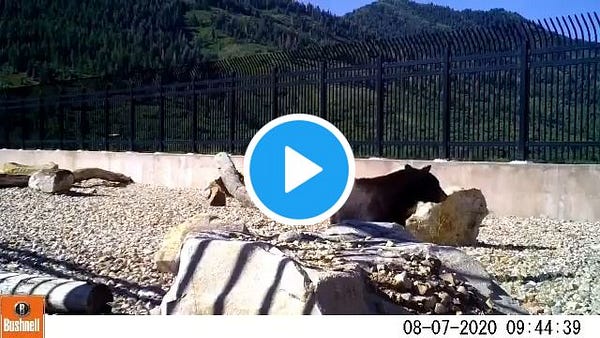
Recommended listening for traversing the Utah of the mind:
Love Theme by Love Theme, sax-heavy desert ambience from the side-project of Dirty Beaches’ Alex Zhang Hungtai.
The Sacrificial Code by Kali Malone, creeping organ dirges to set the mood for a viewing of Carnival of Souls.
Catch you next week, pals. This has been… SCARY COOL SAD GOODBYE.
“You see—no shock. No engulfment. No tearing asunder. What you feared would come like an explosion is like a whisper. What you thought was the end is the beginning.” - Rod Serling, “Nothing In The Dark”




